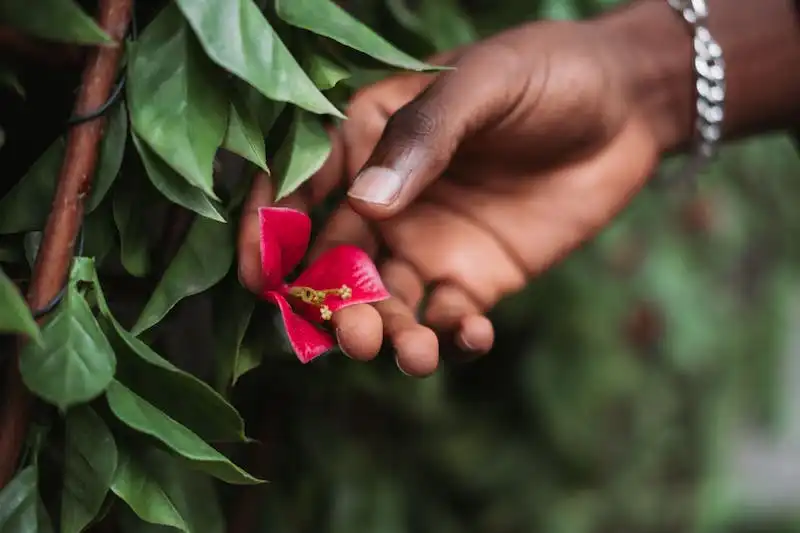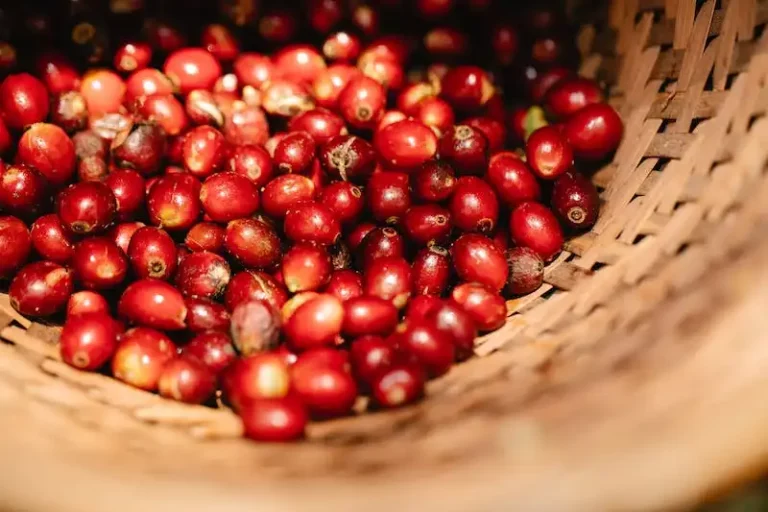When it comes to growing peaches, selecting the right site is crucial. Peaches thrive in areas with long, hot summers and cold winters. In North America, the best sites for growing peaches are in the southern and central regions, as well as certain parts of the north. Canadian gardeners will need to choose cultivars that are hardy enough for their zone.
Before you begin planting your peach trees, proper site preparation is essential. Choose a location with well-draining soil that is rich in organic matter. Peaches prefer a slightly acidic soil with a pH between 6.0 and 6.5. Make sure the site receives full sun for at least 6 hours a day.
When choosing a nursery, make sure to select healthy, disease-free trees. Look for trees with a well-developed root system and strong branches. It’s a good idea to purchase trees from reputable nurseries or certified growers.
Peach trees need enough space to grow and spread their branches. They should be planted at least 15 to 20 feet apart, depending on the cultivar. Dig holes that are twice as wide and deep as the tree’s root ball. Once planted, make sure to water the tree thoroughly.
Peach trees go through a period of dormancy each winter. During this time, they require fewer hours of chilling to break their dormancy and begin producing fruit. The number of chilling hours required varies depending on the cultivar. To ensure a successful harvest, choose peach tree cultivars that are recommended for your region.
Irrigation is essential for the health of your peach trees, especially during the growing season. Provide regular watering, especially during dry periods. Be careful not to overwater, as this can lead to fungal diseases and root rot. A good rule of thumb is to water deeply once a week, giving the tree enough water to reach a depth of 18 inches.
Proper fertilization is key to keep your peach trees healthy and productive. Peaches are heavy feeders and require regular applications of nitrogen and potassium. It’s best to use a complete fertilizer formulated specifically for fruit trees. Apply the fertilizer in early spring before the trees begin to bud.
To prevent diseases and pests, it’s important to keep the area around the peach tree clean and free of debris. Remove any fallen leaves or fruit and thin out any overcrowded branches. This will improve air circulation and reduce the risk of disease.
Pruning is also essential for maintaining the shape and health of your peach trees. Prune in late winter or early spring before new growth starts. Remove any dead, damaged, or diseased branches, as well as any branches that are crossing or rubbing against each other. Remove any suckers that are growing from the base of the tree.
When it comes to harvesting peaches, timing is key. Peaches are ready to harvest when they are fully ripe and easily detach from the tree with a gentle twist. For best flavor and texture, it’s recommended to harvest peaches when they are fully ripe. However, if you plan to store them, you can pick them slightly underripe and allow them to ripen off the tree.
With proper care and maintenance, peach trees can be a beautiful and rewarding addition to your garden. Follow these guidelines, and you’ll be enjoying juicy, delicious peaches from your own backyard orchard in no time!
How to Grow A Peach Tree
Growing a peach tree can be a rewarding and delicious experience. With the right care and attention, your tree will produce a bountiful harvest of juicy, sweet peaches for you to enjoy.
Here is a step-by-step guide to help you successfully grow your own peach tree:
| Step 1: Choose a Location |
| Start by selecting a location that receives full sun for at least 6 hours a day. Peaches thrive in warm climates and need ample sunlight to grow and produce fruit. |
| Step 2: Prepare the Soil |
| Peach trees prefer well-draining soil that is sandy or loamy. Before planting, amend the soil with organic matter to improve its fertility and drainage. Test the soil pH and adjust if needed. Aim for a pH of 6.0 to 6.5. |
| Step 3: Choose the Right Variety |
| When selecting a peach variety, consider the climate and your preferences. There are standard and dwarf cultivars available, each with different space and size requirements. Consult a nursery or reference guide to find the right variety for your region. |
| Step 4: Plant the Tree |
| In early spring, when the ground is no longer frozen, plant your peach tree in a hole that is twice the size of the root ball. Make sure the graft union is above the soil level. Water the tree thoroughly after planting. |
| Step 5: Provide Proper Care |
| Water your tree regularly, especially during dry periods. Avoid overwatering, as peach trees are susceptible to root rot. Apply fertilizers as needed during the growing season, following the recommended dosage for your tree’s age and size. |
| Step 6: Pruning and Thinning |
| Prune your peach tree during its dormant winter period to remove dead or diseased branches, as well as suckers. Thin out the fruit to prevent overproduction and ensure larger, healthier peaches. Leave about 6 inches between each fruit. |
| Step 7: Pest and Disease Control |
| Monitor your peach tree for any signs of pests or diseases, such as aphids or peach leaf curl. Follow proper pest control methods, such as applying insecticides or using beneficial insects. Reference websites like utahpests.usu.edu/ipm for more information. |
| Step 8: Harvesting |
| Once the peaches have ripened and are no longer firm, they are ready to be harvested. Gently twist and pull the fruit from the tree. If the peaches are not quite ripe, they can be left to ripen in a warm location in your house. |
Following these steps will help you grow healthy and productive peach trees that will provide you with delicious fruit for years to come.
WHY YOU SHOULD GROW YOUR OWN PEACHES
Growing your own peaches can be a rewarding and delicious experience. Not only do peaches taste better when they are freshly picked off the tree, but they also offer numerous benefits that make them worth growing in your own backyard.
One of the main benefits of growing your own peaches is that you have control over the irrigation and care of the trees. Proper irrigation is crucial for the growth and development of peach trees. You can ensure that the trees receive the right amount of water at the right time, preventing issues such as yellowing leaves and waterlogged soils.
Another advantage of growing your own peaches is the ability to choose from a variety of peach tree types. Different peach varieties have different ripening times, flavors, and sizes. By selecting the specific types of peaches you want to grow, you can have a harvest that suits your preferences. Whether you prefer small-sized peaches for snacking or large-sized peaches for baking, there is a peach variety out there for you.
Furthermore, growing your own peaches allows you to enjoy the full flavor of a perfectly ripe peach. Peaches bought from the store are often picked before they are fully ripe to withstand transportation. However, when you grow your own peaches, you can let them ripen fully on the tree, resulting in a sweeter and juicier fruit.
In addition to the taste, growing your own peaches can also help save you money. Buying peaches from the store can add up, especially if you enjoy them throughout the summer season. By growing your own peaches, you can have an abundant supply at a fraction of the cost.
Growing peaches also offers the opportunity to experiment with different varieties and try new recipes. With your own peaches, you can create peach pies, cobblers, jams, and other delectable treats. You can also freeze or can the peaches to enjoy them even during the winter months.
Lastly, growing your own peaches can be a satisfying hobby. Watching the trees grow from one-year-old plantings to tall, productive trees as they age can be a fulfilling experience. Taking care of the trees, pruning them in the winter, fertilizing them, and seeing the fruits develop can bring a sense of accomplishment and joy.
In conclusion, there are many reasons why you should grow your own peaches. From the ability to control irrigation and choose the types of peaches you want to the pleasure of enjoying the full flavor of a perfectly ripe peach, growing peaches offers numerous benefits. Not only will you have a fresh supply of delicious peaches, but you will also save money and have the satisfaction of nurturing your own fruit trees.
DECIDE FIRST ON YOUR PRIMARY USE
Before planting a peach tree, it is important to decide on your primary use for the tree. Peach trees can be grown for fruit production or for ornamental purposes.
If you are growing for fruit, keep in mind that peach trees will require regular maintenance, including pruning, watering, fertilization, and pest control. Peach trees also require specific growing conditions, such as full sun and well-drained soil.
If you are growing for ornamental purposes, you may choose a dwarf peach tree. Dwarf peach trees are smaller in size and are easier to manage. They typically do not reach the same height as full-sized peach trees, making them more suitable for small gardens or containers.
No matter what your primary use is, all peach trees benefit from proper care and maintenance. This includes regular watering, especially during dry periods, and fertilization. For watering, it is ideal to provide deep, infrequent watering to promote deep root growth.
Fertilization is also important to provide the necessary nutrients for the tree’s growth and fruiting. Use a balanced fertilizer, such as a 10-10-10 blend, and apply according to package instructions.
In addition to regular care, it is important to address any pest or disease issues that may arise. Peach trees are susceptible to various pests and diseases, including peach leaf curl, aphids, and peach borers. Regular monitoring and early intervention can help prevent or mitigate these issues.
When planting a peach tree, make sure to choose the appropriate variety for your climate. Some peach tree cultivars require a certain number of chilling hours in order to produce fruit. Chilling hours are the number of hours below 45°F (7°C) during the dormant season.
It is also important to consider the spacing requirements when planting peach trees. Allow enough space between trees to ensure proper air circulation and to prevent overcrowding. This will help reduce the risk of disease and promote healthier tree growth.
When ordering a peach tree, it is important to consider the rootstock. The rootstock determines the size and vigor of the tree. Depending on your desired tree size and growing conditions, you can choose between different rootstocks to customize your peach tree.
In conclusion, deciding on your primary use for the peach tree is essential before planting. Whether you choose to grow for fruit production or ornamental purposes, proper care and maintenance are crucial for the tree’s health and productivity. By providing the necessary water, nutrients, and pest control, you can enjoy a bountiful harvest of tasty peaches year after year.




